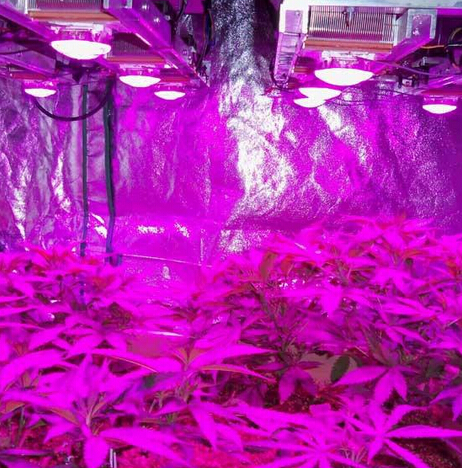“All things grow by the sun”, light is one of the essential elements of crop photosynthesis, good or bad lighting conditions directly affect the yield and quality of crops. In nature, the sun’s illumination will vary with latitude, season and weather conditions change. In addition to the light inside the greenhouse with the above factors, but also closely related to the greenhouse structure, management practices and translucent properties of the materials and the like. Due to the impact of greenhouse covering materials, dust and structural factors such as shading, lighting situation inside the greenhouse is much less than the open field, typically only exposed to a 30% -70%, especially during the winter and early spring, the sun elevation angle is low, sunshine time is short, the greenhouse illumination often can not meet the needs of crop growth, artificial light has become an inevitable choice for many a controlled environment greenhouse management.

At present, the commonly used artificial light sources of greenhouse mainly fluorescent lamps, high pressure sodium, low pressure sodium, metal halide lamps. In recent years, with the successful development of high-power LED, new energy-saving LED light source also attracted wide attention.
LED (light emitting diode) light source developed in recent years is a new energy source. Compared with incandescent, fluorescent and high pressure sodium lamps and other artificial light sources, LED has significant advantages:
· Low-voltage DC power supply. Low-power color LED forward voltage is typically 1.5V-2.8V, high power LED forward voltage is typically 3V-4V, far less than the safety voltage.
· Energy. Sodium and metal halide lamps are gas discharge lamps, heated up by the metal element vapor discharge light. LED light source is a solid, no heating can emit light, is a cold light source, so it reduces power consumption in the heating.
· Monochromatic light source, high luminous efficiency. LED may emit monochromatic light of a half-wave of a large multi-± 20nm, can accurately provide the required spectrum of plants, without wasting energy emits yellow light, green light and other plants unnecessary spectrum.
· Small, flexible application. Can design slim and light fixtures, a large space applications.
· Environmental protection. LED is a solid light source, no mercury and other harmful substances will not cause pollution in the installation, which waste can be recycled. LED light source is environmentally friendly green light.
· Long life. LED is a solid light source, there is no loose interior parts, no glass, filament and other vulnerable and easy to burn parts, mechanical strength, resistance to vibration, impact resistance, life up to 50000h more.
Obvious advantages of LED light sources has caused concern Netherlands, Japan, the United States and other countries of scholars, especially in recent years successfully developed high-power LED for LED fill light in a greenhouse application of the foundation. Great topic of conversation, but no further integration standards also allow consumers to retreat. Great topic of conversation, but no further integration standards also allow consumers to retreat.
